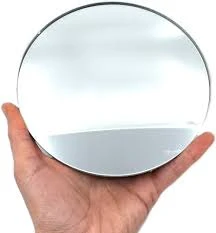

The Enchantment of Decorative Glass Art
Decorative glass art is a fascinating genre that blends creativity, craftsmanship, and aesthetic appeal into stunning visual experiences. This art form encompasses a wide range of techniques and styles, from stained glass windows in historic churches to modern glass sculptures displayed in contemporary galleries. The versatility of glass as a medium allows artists to push boundaries and explore new dimensions in their work, making it an exciting field within both the art and design communities.
The origins of decorative glass can be traced back thousands of years, with evidence of its use appearing in ancient Egypt, Persia, and Rome. Early artisans created glass vessels and beads, often incorporating vibrant colors and intricate designs. However, it was during the Middle Ages that stained glass began to flourish, particularly in Europe. These church windows not only served a functional purpose by allowing light into sacred spaces but also acted as storytelling devices, illustrating biblical scenes and saints. The intricate designs and vivid colors mesmerized worshippers and imprinted the beauty of glass art into the cultural consciousness.
As time progressed, various techniques evolved, including glassblowing, fusing, slumping, and engraving. Each method offers unique opportunities for exploration. For instance, glassblowing, developed around the first century BCE, involves shaping molten glass using a blowpipe, creating both traditional and avant-garde forms. Fused glass, a process where pieces of glass are melted together in a kiln, allows for more abstract designs and colors. Engraving involves etching designs into the surface of glass, resulting in detailed and textured patterns. These techniques have given rise to countless artists and artisans worldwide, each bringing their unique perspective to the medium.

Contemporary decorative glass art often navigates the intersection of utility and artistic expression. Glass artists create functional objects—such as vases, bowls, and lighting—imbued with artistic flair, transforming everyday items into conversation pieces. This fusion of form and function challenges perceptions of what art is and expands the traditional boundaries of glass work. Artists often draw inspiration from nature, architecture, and cultural motifs, resulting in pieces that resonate on multiple levels.
Furthermore, decorative glass art is increasingly being recognized for its role in environmental sustainability. Many contemporary artists are exploring the use of recycled glass, turning discarded materials into beautiful art. This approach not only reduces waste but also showcases the potential for transformation and renewal, themes that resonate deeply in today’s world.
Moreover, the rise of digital technology in recent years has allowed artists to experiment with new tools and techniques, such as digital modeling and laser cutting, further enhancing the possibilities within decorative glass art. Artists can now create intricate designs that were once unimaginable, pushing the medium into uncharted territory.
In exhibitions around the world, decorative glass art continues to captivate audiences. It invites us to appreciate the interplay of light and color, texture and form. As we admire these creations, we are reminded of the timelessness of glass art and its ability to evolve while maintaining its core allure. Whether through a dazzling stained glass window or a minimalist glass sculpture, decorative glass art remains a powerful testament to human creativity and craftsmanship, illuminating our lives in more ways than one.